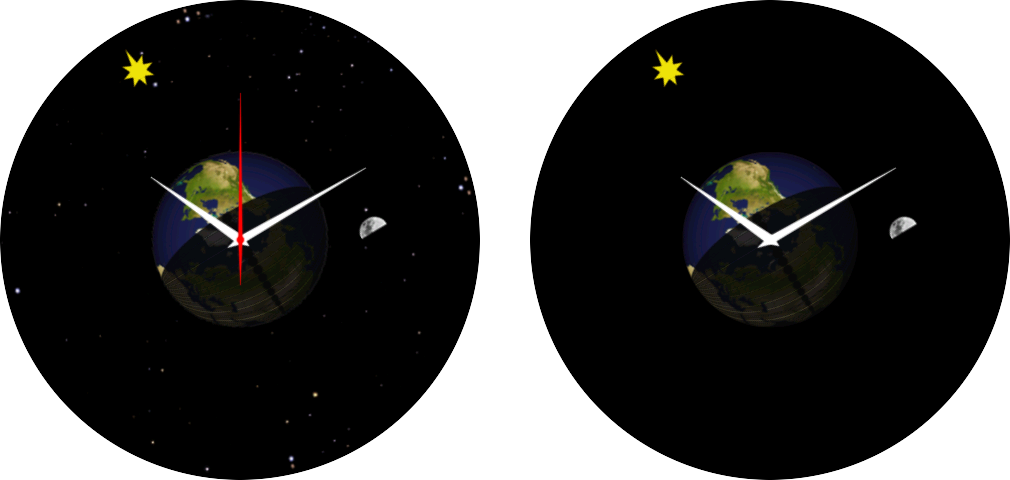
| Buy this face |

|
| Buy all 21 faces |

|

| Buy this face |

|
| Buy all 21 faces |

|
Alexandria, named for the home of the ancient Greek astronomer Ptolemy, shows a geocentric representation of the positions of the Sun and the Moon relative to the Earth. The Earth is shown from a co-rotating perspective above the north or south pole with the watch's current longitude at the top. The Sun hand indicates the current position of the Sun relative to the Earth's surface. The Moon is shown at the appropriate angle and with its terminator in the right orientation.

The position of the Earth's terminator (the boundary between night and day) is adjusted for the seasons.
The (fictitious) starry background rotates once a year relative to the Sun. Though Alexandria has no date windows the approximate times of the solstices, equinoxes, and
apsides for dates within a few decades of the present are indicated by the position of the Sun relative to some tiny star patterns in interactive mode:
for dates within a few decades of the present are indicated by the position of the Sun relative to some tiny star patterns in interactive mode:
| Date | Event | Note | |
|---|---|---|---|
 | Mar 20 | Equinox | beginning of northern spring |
 | Jun 21 | Solstice | beginning of northern summer |
 | Sep 22 | Equinox | beginning of northern fall |
 | Dec 21 | Solstice | beginning of northern winter |
 | Jan 4 | Perihelion | Earth closest to the Sun |
 | Jul 4 | Aphelion | Earth farthest from the Sun |
Of course, this display is wildly out of scale!
The distance to the Moon is roughly 30 Earth diameters, to the Sun more than 7000.
In ambient mode, the same information is displayed, but with a black background.